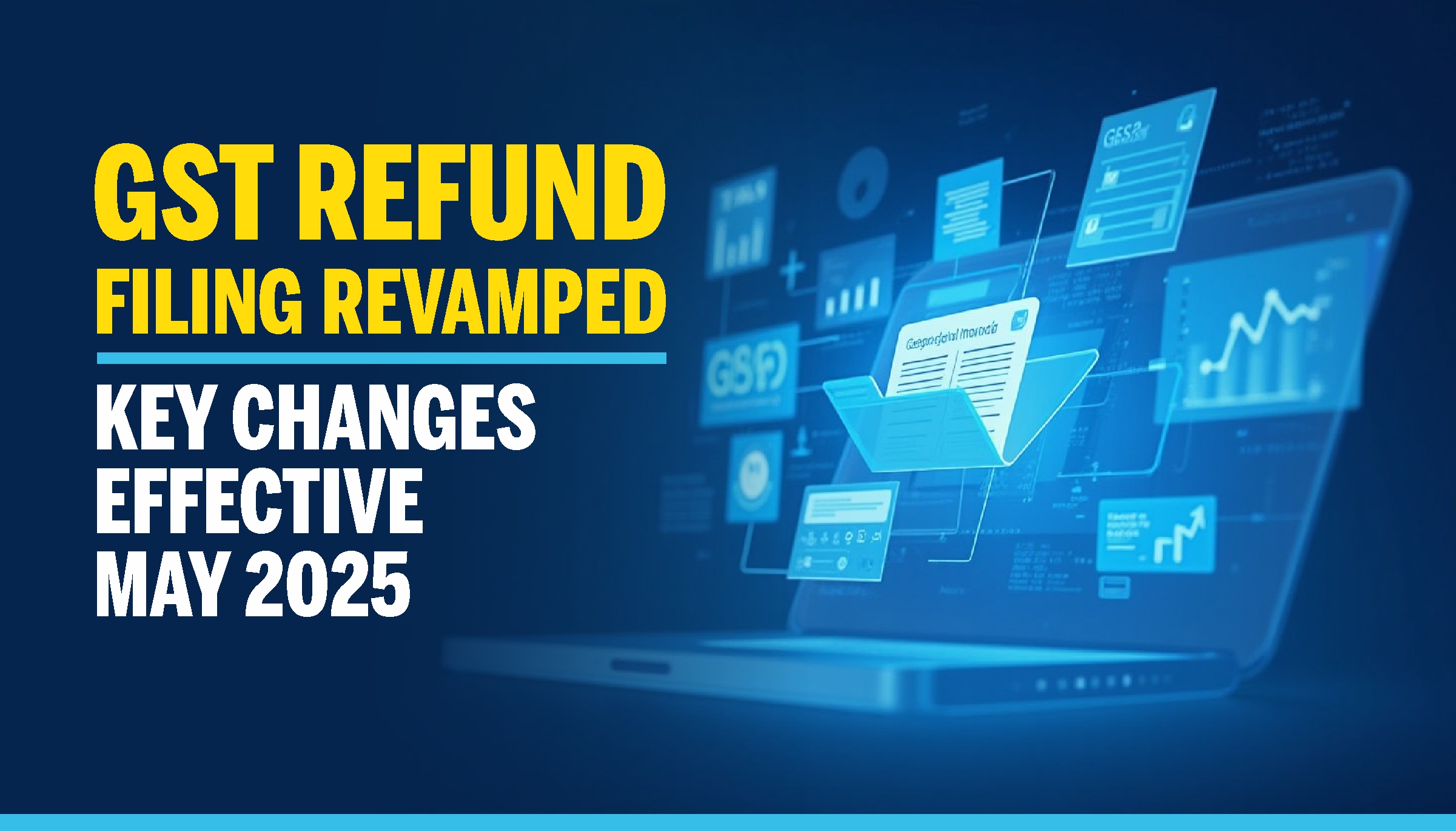GST Refund Filing Revamped: Key Changes Effective May 2025

The Goods and Services Tax Network (GSTN) has announced important procedural changes in the refund filing framework under various categories, effective from May 8, 2025. These modifications are aimed at simplifying compliance, enhancing automation, and providing greater flexibility to taxpayers engaged in export-related transactions and deemed export supplies.
This article provides a comprehensive overview of the newly introduced reforms in refund procedures, outlines the step-by-step implications for taxpayers, and highlights how these changes will streamline the refund filing process across specific categories.
1. Transition to Invoice-Based Refund Filing for Key Export Categories
The refund application process has been overhauled for the following refund categories:
-
Export of Services with payment of tax
-
Supplies made to SEZ Unit/SEZ Developer with payment of tax
-
Refund by Supplier of Deemed Export
Key Procedural Changes:
a) Elimination of Tax Period Selection:
One of the most notable changes is the removal of the requirement to specify a particular tax period (“From” and “To”) when filing a refund application. Previously, taxpayers were obligated to submit refund claims based on specific tax periods. With the updated process, taxpayers can now directly select the appropriate refund category and proceed by clicking the “Create Refund Application” button on the GST portal.
b) Shift from Tax Period-Based Filing to Invoice-Based Filing:
GSTN has transitioned the above refund categories from a tax-period-based approach to an invoice-level approach. Under this system, taxpayers are required to upload individual eligible invoices related to the relevant category of refund and submit their application accordingly.
c) Mandatory Return Filing:
It is imperative for taxpayers to ensure that all relevant GST returns—including GSTR-1 and GSTR-3B—are filed up to the date of filing the refund application. Refund claims will not be processed unless all pending returns are duly filed.
d) Statements for Invoice Upload:
Depending on the nature of the refund, taxpayers are required to upload invoice data into the following prescribed statements:
-
Statement 2: For refund on export of services with payment of tax
-
Statement 4: For refund on supplies made to SEZ units or developers with payment of tax
-
Statement 5B: For refund claimed by suppliers in case of deemed exports
Once invoices are uploaded as part of a refund application, they are locked in the system and cannot be modified or reused for any future refund claims. These invoices will only be unlocked in two scenarios: if the refund application is voluntarily withdrawn by the taxpayer or if a deficiency memo is issued by the tax authority.
2. Revised Refund Process for Recipients of Deemed Exports
GSTN has also implemented a separate set of changes for the refund category titled:
“On account of Refund by Recipient of Deemed Export.”
Key Revisions Introduced:
a) Chronological Filing Requirement Removed:
Taxpayers filing refunds under this category are no longer required to follow a chronological sequence based on tax periods. The previous requirement to select “From Period” and “To Period” has been discontinued, thereby offering flexibility in claiming refunds based on invoice data rather than a fixed timeline.
b) Updated ‘Amount Eligible for Refund’ Table:
The format of the table used to calculate the eligible refund amount has been comprehensively updated. The newly revised table includes the following columns:
-
Column 1: Balance in Electronic Credit Ledger (ECL)
This column is auto-populated and displays the available balance under each major tax head (IGST, CGST, SGST, UTGST) at the time of filing the application. -
Column 2: Net Input Tax Credit (ITC) of Deemed Exports
This field reflects the ITC claimed by the taxpayer based on the invoices furnished in Statement 5B. It is also auto-populated. -
Column 3: Refund Amount as per Uploaded Invoices
This column indicates the total ITC claimed under all heads and is editable to allow for downward adjustments by the taxpayer, if necessary. -
Column 4: Eligible Refund Amount
This field is automatically calculated based on the available balance in the ECL and the order of utilization specified in Circular No. 125/44/2019-GST dated 18.11.2019. -
Column 5: Refund Amount Not Eligible Due to Insufficient Balance
This column shows the differential amount between the total claimed refund and the available ITC balance in the ECL, thereby indicating the portion of the refund claim that cannot be processed due to insufficient funds.
c) Improved Functionality to Maximize Refunds:
One of the critical improvements introduced is the system’s ability to compare the total ITC available across all heads in the electronic credit ledger against the total refund amount claimed in respect of deemed exports. This optimization ensures that taxpayers are able to claim the maximum possible refund based on their available invoice data, even if there are imbalances in credit across individual tax heads.
Steps to File Refund Application Under the New System
-
Ensure all due returns (GSTR-1, GSTR-3B, etc.) are filed up to the refund application date.
-
Log in to the GST portal and select the relevant refund category.
-
Click on “Create Refund Application.”
-
Upload the required invoice details in the appropriate statement (2, 4, or 5B).
-
Review the auto-populated data and editable fields in the refund calculation table.
-
Submit the application for processing.
Support and Grievance Redressal
In case taxpayers face any technical difficulties or procedural issues while filing refund applications, they are advised to raise a grievance through the GST Self-Service Portal at the following link:
https://selfservice.gstsystem.in/ReportIssue.aspx
Implications for Taxpayers
The transition to invoice-based filing and automation of refund calculation tables is a progressive step toward easing compliance for exporters and deemed export suppliers. The elimination of tax period dependency and the optimization of ITC utilization across tax heads will reduce processing delays, improve accuracy, and enhance the overall taxpayer experience.
These changes are also expected to reduce errors, minimize manual intervention, and encourage faster refund disbursals—thereby improving working capital management for businesses involved in export-related operations.
